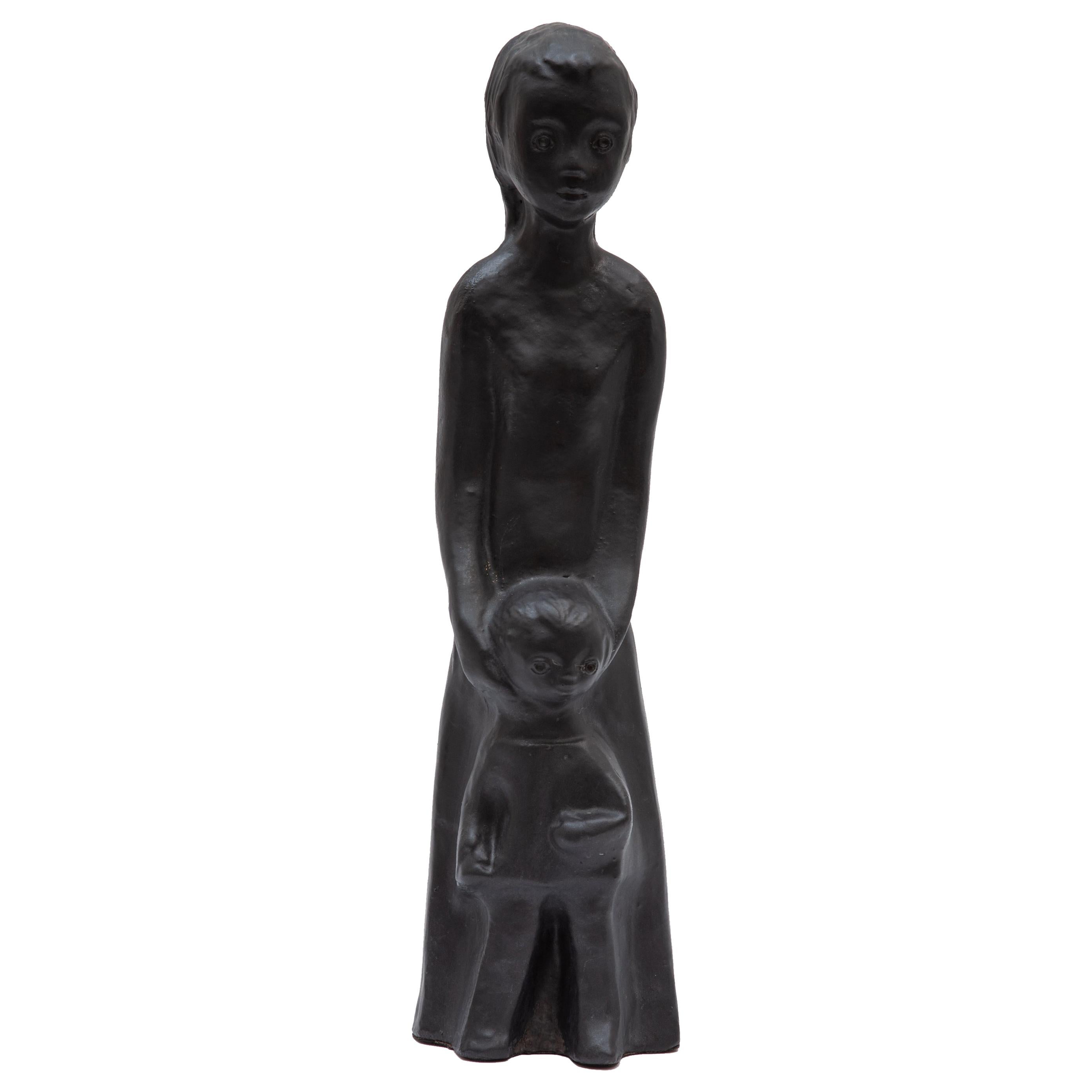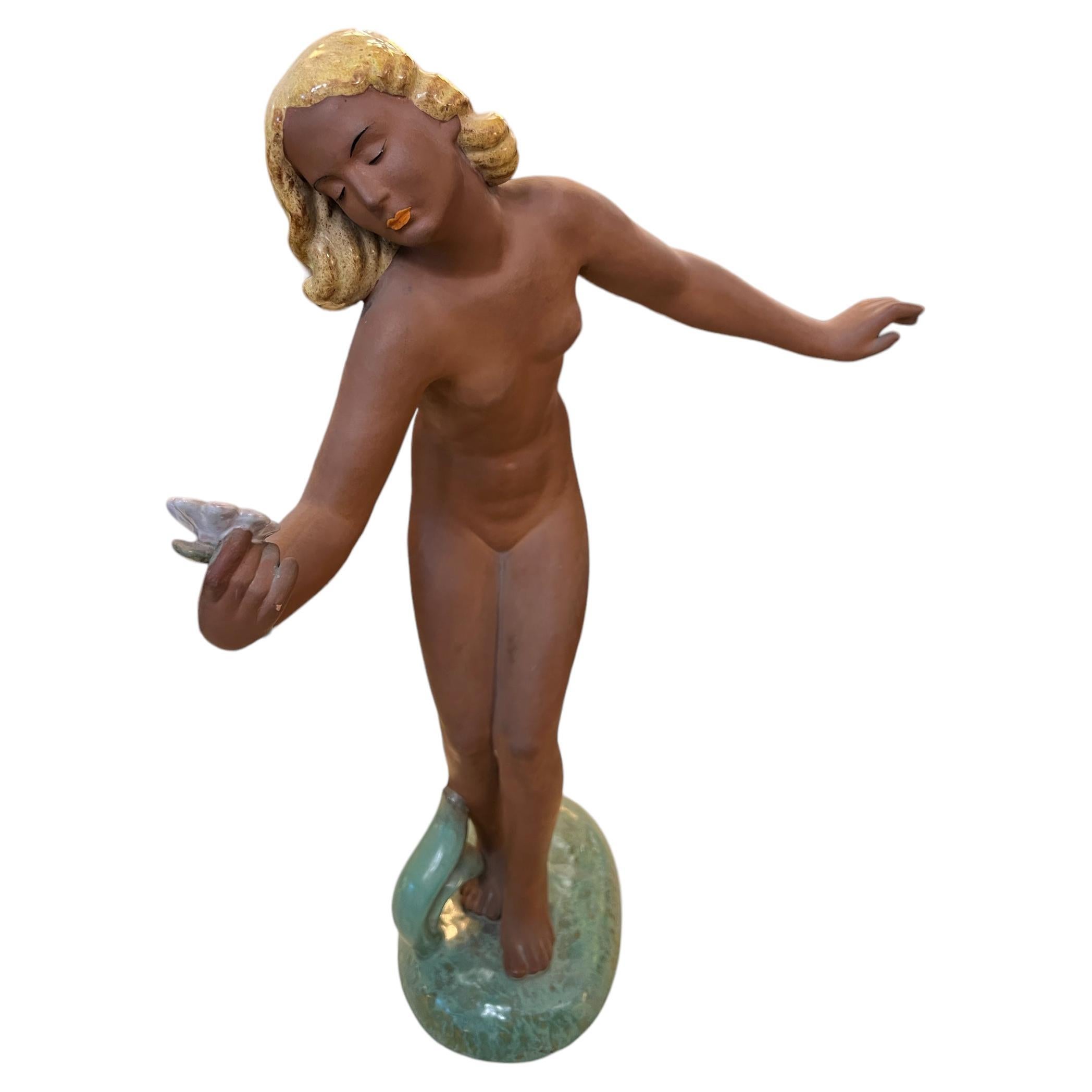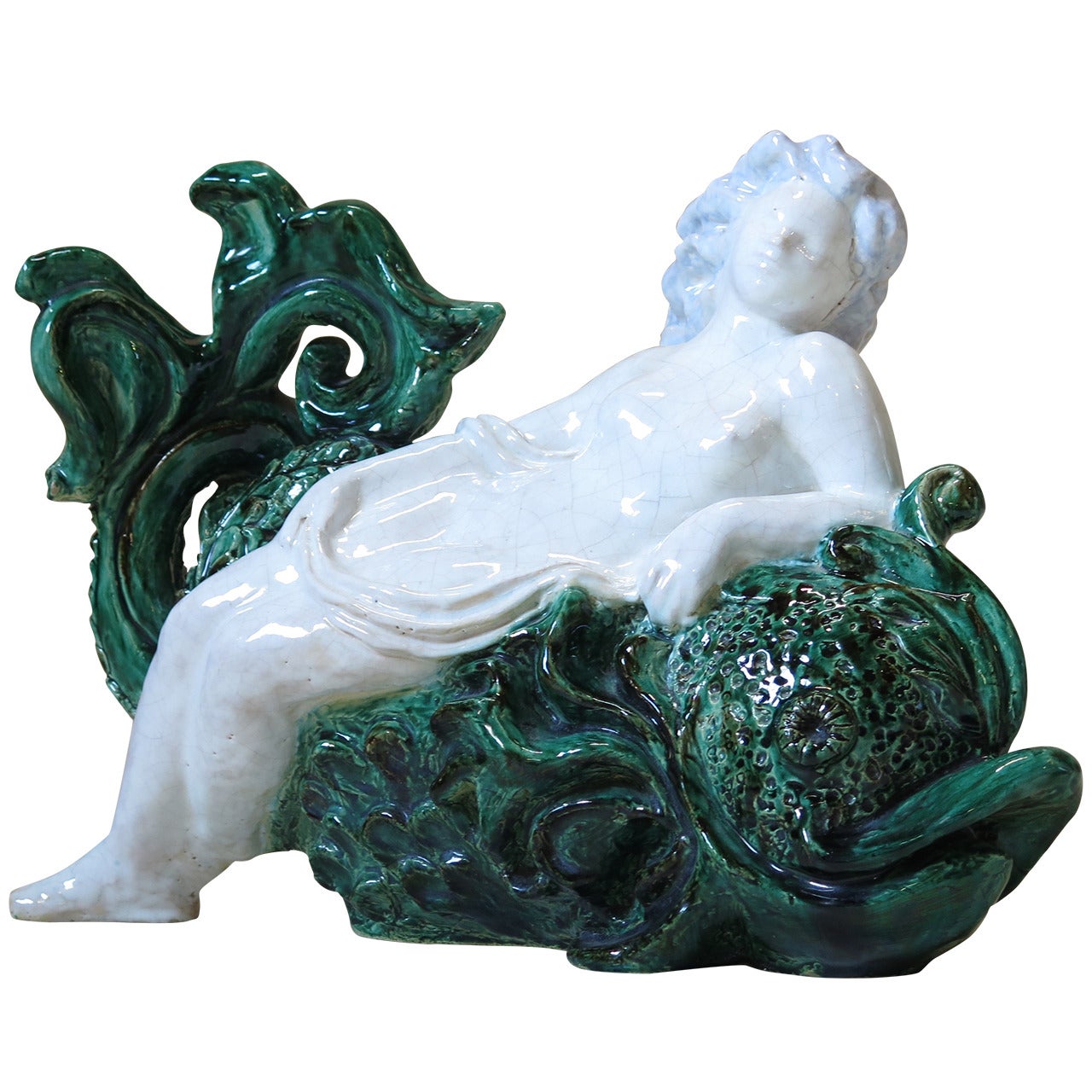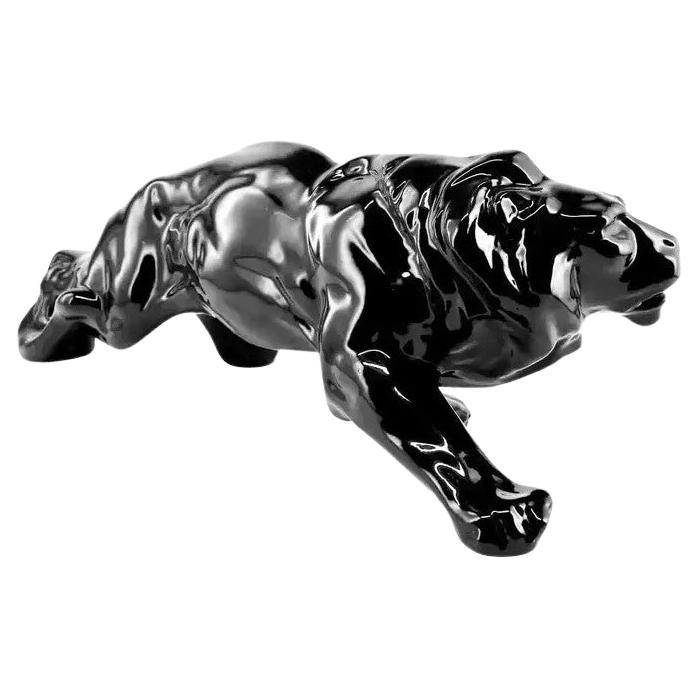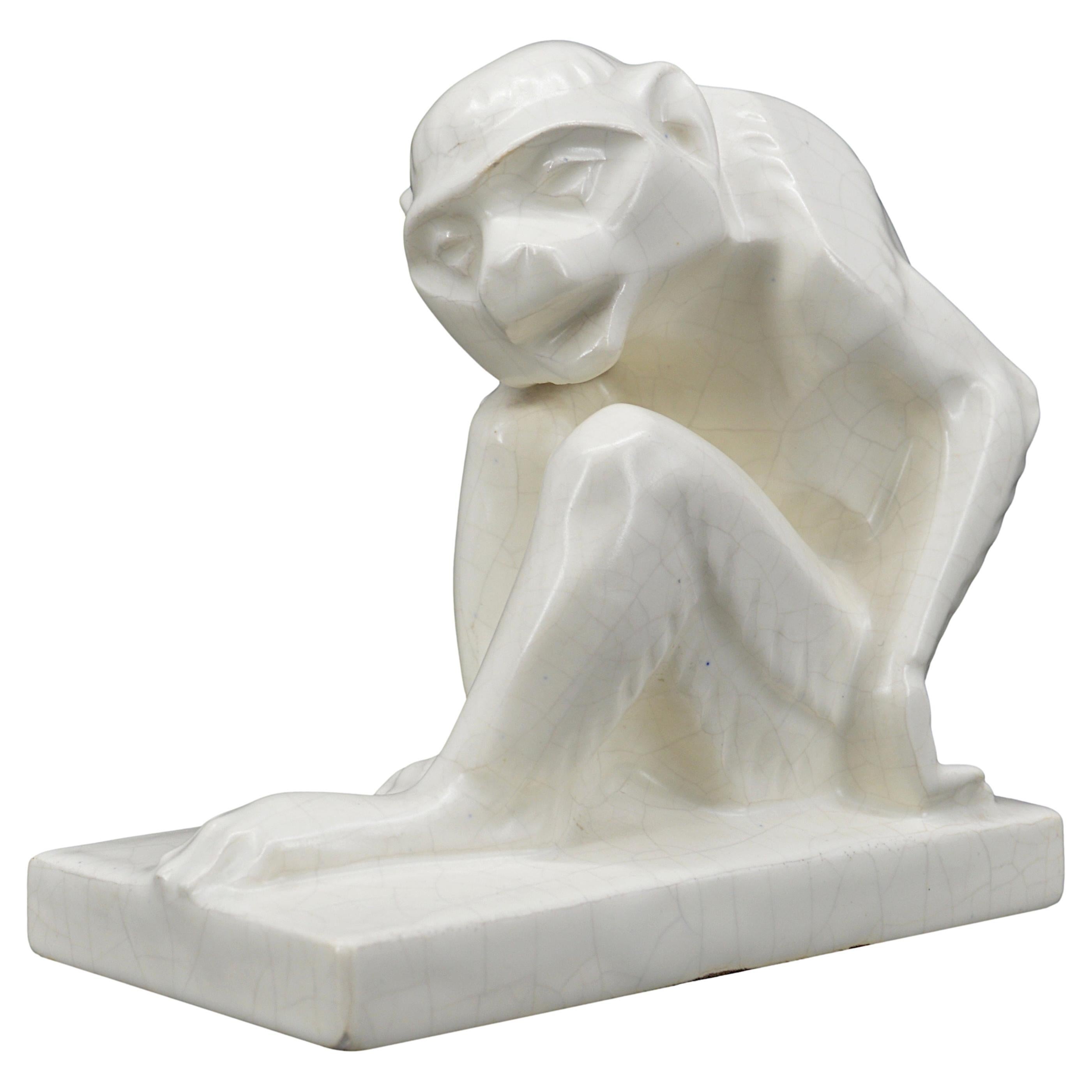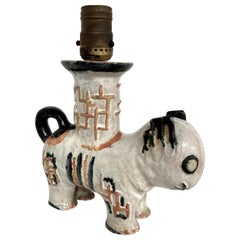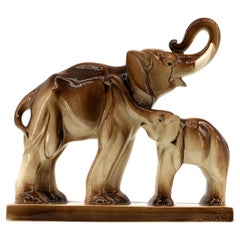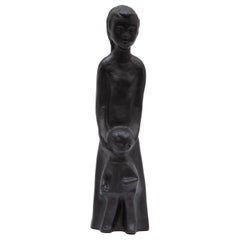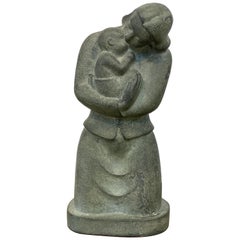
WPA Art Deco Ceramic Mother and Child
View Similar Items
Want more images or videos?
Request additional images or videos from the seller
1 of 9
WPA Art Deco Ceramic Mother and Child
About the Item
- Dimensions:Height: 11.25 in (28.58 cm)Width: 5.25 in (13.34 cm)Depth: 3.25 in (8.26 cm)
- Materials and Techniques:Ceramic,Cast
- Place of Origin:
- Period:
- Date of Manufacture:20th Century
- Condition:Wear consistent with age and use. Minor losses. Minor imperfections.
- Seller Location:Palm Springs, CA
- Reference Number:1stDibs: LU835014638542
About the Seller
5.0
Platinum Seller
These expertly vetted sellers are 1stDibs' most experienced sellers and are rated highest by our customers.
1stDibs seller since 2007
368 sales on 1stDibs
More From This SellerView All
- Anne Marie Paul Bronze Mother and ChildLocated in Palm Springs, CAA large and quite lovely bronze by the noted French artist Anne Marie Paul (1949-2005). This piece is signed AM Paul and numbered 5/99 with a foundry m...Category
20th Century French Figurative Sculptures
MaterialsBronze
- Kitty Rix for Wiener Werkstatte 1920's Cat CeramicBy Wiener Werkstätte, Kitty RixLocated in Palm Springs, CAA wonderful ceramic, pottery cat designed by Kitty Rix and executed by the Wiener Werkstatte in the late 1920's. It was produced as a lamp and has an old leviton fixture and some new...Category
Vintage 1920s Austrian Animal Sculptures
MaterialsPottery
- Otello Rosa for San Polo Large Ceramic MinstrelsBy Otello Rosa, San PoloLocated in Palm Springs, CAA trio of large size minstrels by Otello Rosa for San Polo of Venezia. They are in wonderful condition. They are 24 inches tall.Category
Vintage 1960s Italian Figurative Sculptures
MaterialsCeramic
$4,800 / set - Italian Majolica Incised and Painted Ewer Fish MotifLocated in Palm Springs, CAA truly whimsical and wonderful piece of Italian Majolica that is incredibly well crafted. It is incised and appears almost enameled. It is signed or inscribed by the artist on the b...Category
Vintage 1950s Italian Animal Sculptures
MaterialsMajolica
- Dahl Jensen CoupleBy Dahl JensenLocated in Palm Springs, CAWonderful sculpture by Dahl Jensen of an embracing couple. Large size version. Numbered 1184 and signed on the base. Impressed DJ as well. In excellent condition. 10 inches tall.Category
20th Century Danish Ceramics
MaterialsCeramic
$1,800 - Frederico Cantu Large Impressive 1986, Bronze of a Mother NursingBy Federico CantúLocated in Palm Springs, CAA large and impressive work by the California or Mexican noted artist Frederco Cantu (1907-1989). It is signed and dated 1986. Quite large and heavy. A brief bio follows from askant: Federico Cantú...Category
Vintage 1980s American Modern Figurative Sculptures
MaterialsBronze
$9,375 Sale Price25% Off
You May Also Like
- Charles Lemanceau French Art Deco Elephants Mother and Child, 1935By PrimaveraLocated in Saint-Amans-des-Cots, FRCouple of elephants by Charles Lemanceau at Saint-Clement's, France, circa 1935. French art ceramic. Mother and child. Measures: Width: 13.4"(34cm), height: 12.2"(31cm), depth: 4.25"...Category
Vintage 1930s French Art Deco Animal Sculptures
MaterialsCeramic
- Black Ceramic Sculpture of Mother and Child by Elie Van Damme, BelgiumBy Elie van DammeLocated in Antwerp, BEEarly moulded Amphora sculpture ceramic of mother and child, created by Elie Van Damme, circa 1960. Black metallic glaze. Perfect condition. Free shipping.Category
Vintage 1960s Belgian Mid-Century Modern Figurative Sculptures
MaterialsCeramic
$613 Sale Price20% OffFree Shipping - Ceramic Red and Black, Style, Art DecoLocated in Ciudad Autónoma Buenos Aires, CCeramic Sign: Made in Austria Keramos 2051 19/M Wiener Keramos, later Keramos AG or Keramos KG , was a Viennese ceramics manufacturer that made a name for itself especially in the interwar period . In addition to their own designs, designs from the dissolved Wiener Werkstätte were also produced from 1932 onwards. In over 60 years of company history, around 3000 model designs have been produced by around 60 ceramists. Keramos also carried out commissions from the Wiener Werkstätte, such as vases by Dagobert Peche . History The origins of the Keramos company lie in two companies with the same name. The company Keramos – Invalid Society for Viennese Art Ceramics was founded at the end of 1919 on the initiative of the three ceramists Rudolf Wolf, Heinrich Wolf and Ludwig Rys, who had become invalids in World War I. Production started in September 1920. Art-ceramic lamps, figures, vases and boxes were produced. The company Keramos – Viennese art ceramics and porcelain manufactory was founded in 1920. Josef Hoffmann was a shareholder of Keramos for a long time, as was the sculptor Rudolf Podany, who was engaged from the start and created a large number of designs. From 1921 Anton Klieber was employed, who was also responsible for most of the models. Around 1924 both companies were merged and converted into an AG, commercial director became Otto Köller, the technical directors were the brothers Rudolf and Heinrich Wolf. "Some war invalid ceramists founded a workshop with the help of some artists, which was subsequently financed by the state and later enlarged with its participation and converted into a joint-stock company." The company's headquarters were in the Hofburg , Schwarze-Adler-Stiege, the factory in the 10th district of Vienna, Schleiergasse 17. Artistic collaborators at that time were Eduard Klablena , Otto Prutscher , Karl Perl , Karin Jarl-Sakellarios , IDA Schwetz- Lehmann and Grete Fucik-Fischmeister. On February 23, 1928, the triangular mark was entered in the trademark register. It was now also produced for the Wiener Werkstätte. Difficulties for the company arose from the Great Depression . Around 1932, 50 people were employed and a large number of models from Eduard Klabena and the dissolved Wiener Werkstätte were taken over. The works created by Keramos were labeled with their company brands until after 1941. From 1939 the economic situation of the company was better managed by taking over the production of ceramic winter welfare organization badges, the so-called WHW badges. Before 1941 the company is converted into a KG named Keramos, Wiener Kunstkeramik und Porzellanmanufaktur Brüder Wolf KG . Otto Köller was no longer active from this point on. After the end of World War II, Robert Obsieger recommended Robert Mathis as the new head of Keramos, who took over the management of the ceramics manufactory in 1945. In 1949 Mathis introduced a new company logo, which was used alongside the existing triangle mark, the so-called coat of arms mark. Anton Klieber and Rudolf Podany continued to work as ceramists, and new artists such as Josef Lorenzl and Stephan Dakon , both of whom had previously worked for Goldscheider , as well as Rudolf Chocholka, Karl Grössl and Ina Eisenbeisser were engaged. New models such as dancers, children's figures, animals and nudes were created, as well as the well-known wall masks, young people and poodles from the mid-1950s, which corresponded to the trend at the time. In addition, however, traditional designs such as Madonna statues and busts, saints and angels were still made. Utility ceramics such as crockery, vases, lamp bases, candle holders and flower pots also became an important branch of production, and cooperation with the German manufacturer Carstens at the beginning of the 1960s was just as lucrative. In the course of the 1960s, the sales markets for figurative ceramics became increasingly difficult. So until 1982, production was increasingly shifted to everyday ceramics, since ceramic figures were no longer modern due to changing tastes and the spirit of the times. Ultimately, the economic situation at Keramos became more and more difficult and Klaus Mathis, the son of Robert Mathis and then director, who succeeded his father at the helm of the company at the beginning of the 1970s, initiated the liquidation of the company at the end of 1982 . Staff The following artistic collaborators have worked for Keramos over the years: Hans Adametz , Franz Barwig the Elder , Franz Barwig the Younger , Andreas Beck, Hans Bolek, Angelo Bortolotti, Hertha Bucher , Rudolf Chocholka, Stephan Dakon , Ferdinand Doblinger, Eckstein, Franz Eggenberger , Ina Eisenbeisser, English, Stephan Erdös, Alois Feichtinger, Feyslitz, Hans Friedberger, Grete Fucik-Fischmeister, Kurt Goebel, Anton Grath, Karl Grössl, M. Günther, Otto Hafenrichter, Arnold Hartig , Friedrich Herkner, Trude Hillinger, Leopold Hohl, Hostasch, Karl Jamök, Karin Jarl-Sakellarios , Eduard Klablena, Klar, Anton Klieber, Maria Klinger, Josef Kostial, Josef Lorenzl , Wilhelm Otto Lugerth, Viktor Matula, Gusty Mundt-Amman, Novotny, Carl Perl, Rudolf Podany, Friedrich Pollak, Hugo Postl, Adolf Prischl, Otto Prutscher , Max Rieder , Elisabeth Rieger-Hofmann, Walter Ritter , Willibald Russ, Karl Sailer, Schönberg, Schwarz, Ida Schwetz-Lehmann , Sult, Robert Ullmann , Otto Weigand, IDA Weiss-Moricz, Rudolf Wolf. Exhibitions • Jubilee exhibition of the Wiener Kunstgewerbeverein, Austrian Museum , Vienna 1924. • Arts and Crafts Exhibition, Paris, 1925. • Exhibition of Austrian arts and crafts...Category
Vintage 1930s Austrian Art Deco Figurative Sculptures
MaterialsCeramic
- French Art Deco Glazed Ceramic Woman and Dolphin SculptureLocated in Isle Sur La Sorgue, VaucluseLovely glazed ceramic representation of a nude woman reclining on a dolphin's back. Craquelure finish on the woman. Signed and dated "GN, 1946."Category
Mid-20th Century French Art Deco Ceramics
- French Art Deco Ceramic Tigers, 1930sBy La MaitriseLocated in Saint-Amans-des-Cots, FRFrench Art Deco ceramic sculpture by Odette Berlot & Yvonne Mussier (Vierzon, 1927-1940), France, 1930s. Three tigers. Measures: height: 8.3"(21cm), width : 20.5"(52cm), depth: 3.9"(...Category
Vintage 1930s French Art Deco Animal Sculptures
MaterialsCeramic
- French Art Deco Ceramic Black Lion, 1930sBy Studio Art DecoLocated in Saint-Amans-des-Cots, FRBlack lion, France, 1930s ceramic. This lion has been made in black, green, and red. This is the black one! Same period as Charles Lemanceau, François Pompon, Lejean, Jean & Jacques ...Category
Vintage 1930s French Art Deco Animal Sculptures
MaterialsCeramic

